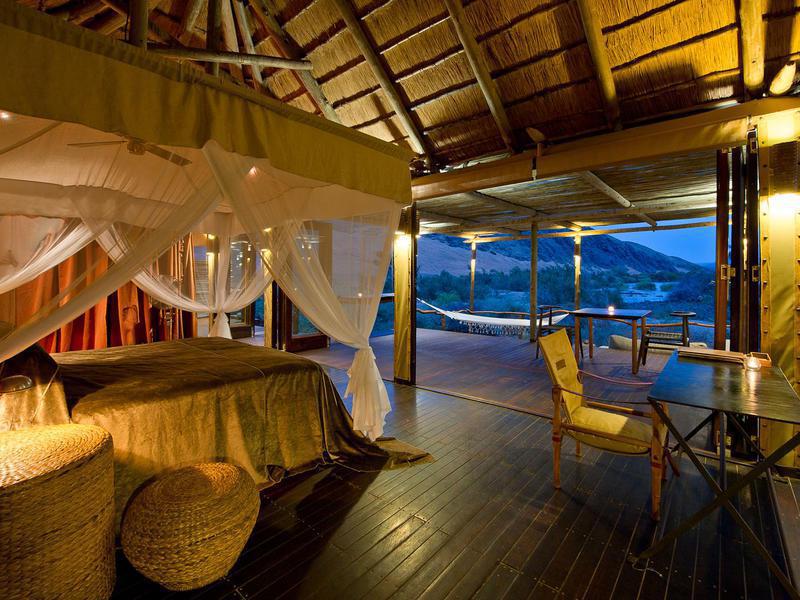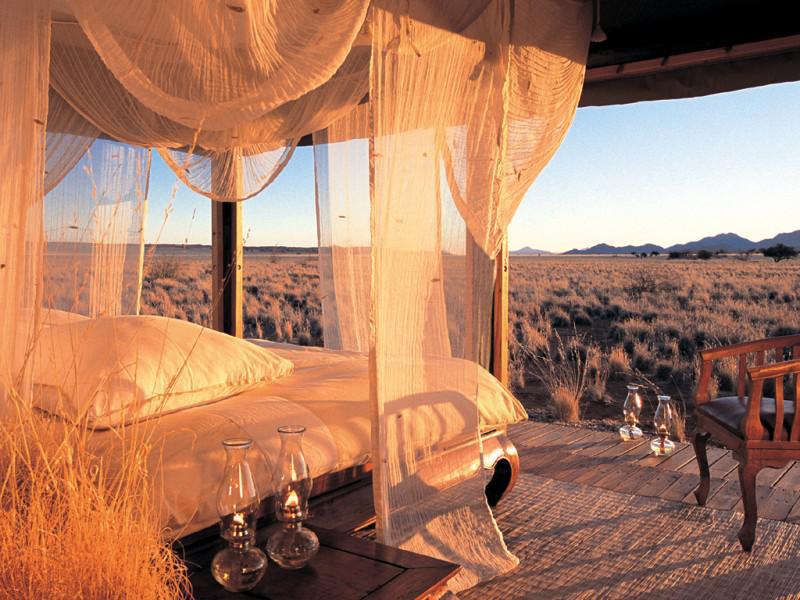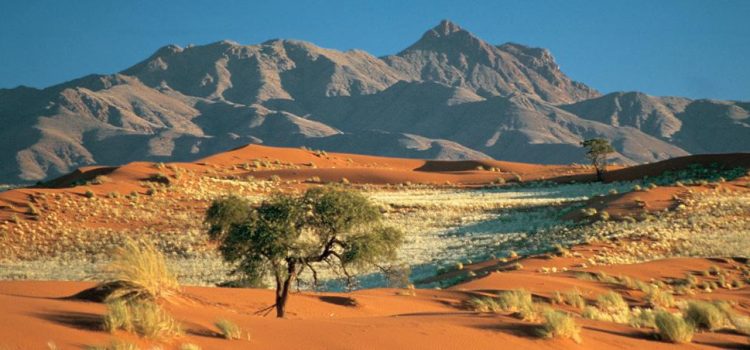Southern Africa is home to an abundance of game reserves and safari lodges and, as eco-tourism and nature conservation become increasingly important, more and more of them are putting greater emphasis on protecting the environment from which they earn their revenue. A few eco-retreats have managed to strike the perfect balance between providing stellar safari experiences and treating the environment with respect. We once again return to our much-loved ecotourism book Africa’s Finest with our focus this time on Namibia. Published by well-known conservationist (and founder of Wilderness Safaris) Colin Bell, the book gives the safari industry a full audit highlighting their commitment to sustainability and excellence in eco-tourism. Teams assessed several hundreds of camps according to a set of strict criteria, and five from Namibia made it into the top 50 lodges and camps.

1. Damaraland Camp Located in the heart of the Torra Conservancy in north-western Namibia, Damaraland Camp is surrounded by some of the most beautiful landscapes in Southern Africa. Much of the camp’s unique attraction comes from its extremely remote location. The vast Torra Conservancy is a whopping 352, 000 hectares of stunning desert landscape and stark mountain valley views. At first glance of this seemingly barren region, it appears as if nothing ever grows. But this is the magic of Namibia – cool Atlantic Ocean breezes and mists bring with them enough moisture to inject life into the conservancy, and desert-adapted plants and animals thrive. Guests at Damaraland Camp will find ten pristine adobe-styled houses, a large swimming pool and a relaxing thatched living area.
Damaraland Camp would suit travellers who are looking for big views, relaxation as well as the opportunity to possibly see desert adapted wildlife species.

2. Desert Rhino Camp Desert Rhino Camp is home to the largest population of free-roaming black rhino on the continent. The camp is located in the north-west of the country on the 450, 000 hectare Palmwag Concession. Desert Rhino Camp itself is made from large canvas tents, mirroring the traditional dwellings of the Meru tribe. The flora and fauna in the region are enough to satisfy even the most experienced safari expert, and the wildlife includes prolific birds, elephants, the native oryx and springbok. Travellers can also be assured that the camp has made every effort to reduce its carbon and human footprint.
Desert Rhino Camp would suit travellers curious to track the rare desert rhino and lean more about desert adapted wildlife.

3. Etendeka Mountain Camp Built on the premise of ‘treading lightly’, the Etendeka Mountain Camp exemplifies eco-tourism at its best. Located at the foot of the Grootberg Mountains in the north of Namibia, the camp has promoted itself almost exclusively as a place of desert wildlife education rather than tourism. A safari at Etendeka is guaranteed to be eco-friendly from the type of vehicles that are driven, and the areas entered, to the strict recycling efforts throughout the camp. Etendeka has tried to keep the landscape as untouched as possible so guests will notice that there are no fences or farm buildings anywhere in the area.
Etendeka Mountain Camp is perfect for travellers looking for solitude and photographically impressive landscapes.

4. Serra Cafema Camp Located right next to the majestic Kunene River, Serra Cafema Camp is a magical oasis of a place in the north-west of Namibia. Many guests have commented on how surreal it is to be able to ride challenging white water rapids in the middle of the desert! Serra Cafema prides itself on being one of the most private and intimate in the region. The Marienfluss Conservancy, on which the camp is situated, is largely untouched, and this provides the perfectly rugged terrain for those who’d like to do some off-road exploring. This is also one of the few camps where guests have the opportunity to interact with the fascinating local Himba tribe.
Serra Cafema Camp suits travellers looking for remoteness, relaxation and cultural interactions.

5. Wolwedans Situated on one of the largest private game reserves in the Southern African region, Wolwedans is certainly among the most celebrated eco-camps of its kind. The NamibRand Nature Reserve spans more than 200, 000 hectares and is well-managed. In fact, 50, 000 hectares of the entire reserve has been set aside as a conservation area, allowing access only to walking safaris. The region has always been a preferred subject for photographers, artists and film makers, which is no surprise when one experiences the pure and desolate beauty of the landscape. The NamibRand has also recently been named Africa’s first Dark Sky reserve because it almost has no light pollution. Lying between the coastal plain of the Namib Desert and the Great Escarpment, visitors to Wolwedans should brace themselves for heat of unchartered proportions – this is the desert after all.
Wolvedans is perfect for those seeking relaxation the peace and quiet of the desert, photographic opportunities and luxury.

For sheer remoteness, spectacular unique beauty and haunting night skies Namibia is unbeatable. If you want to experience the startling beauty and magic of this country firsthand, we suggest staying at any one of these five camps. We can almost guarantee you will be back! Get in touch with one of our expert consultants about your ideal Namibian trip.



